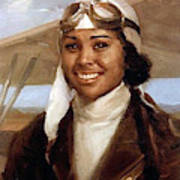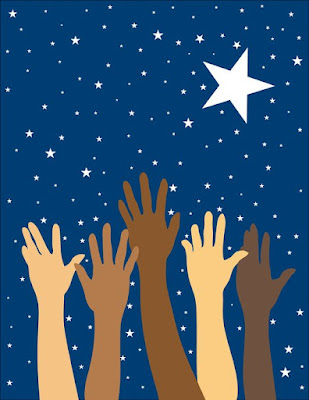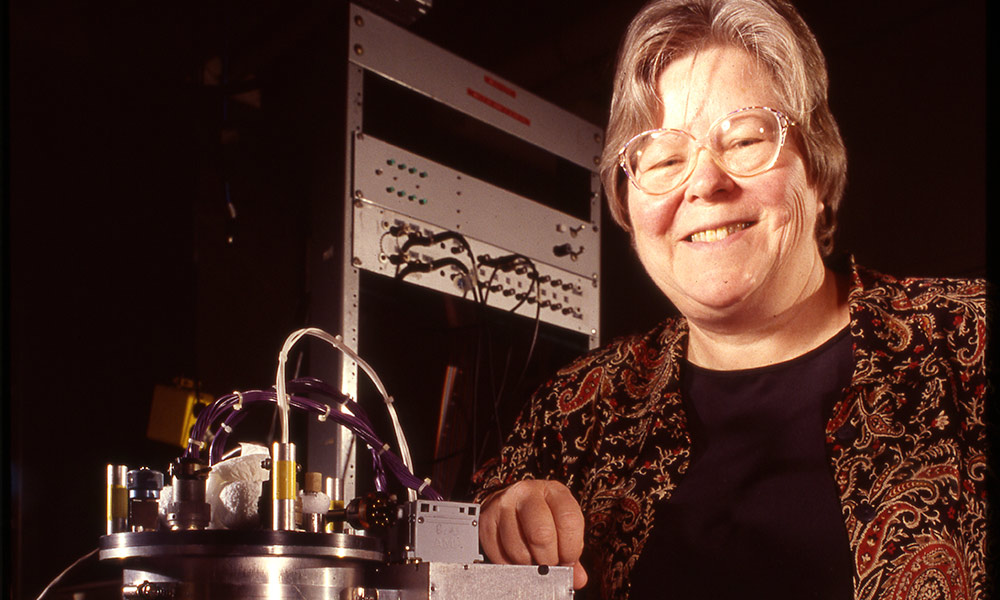AAS Committee on the Status of Women
Issue of March 25, 2022
eds: Heather Flewelling, Nicolle Zellner, Alessandra Aloisi, Jeremy Bailin and Sethanne Howard
[We hope you all are taking care of yourselves and each other. --eds.]
This week's issues:
1. Expanding Space in Astrophysics: A Wikipedia Edit-a-thon
2. New Graduate-Student Mentoring Program with NHFP Fellows
3. Out in Astronomy — A Panel Discussion
4. The rise of citational justice: how scholars are making references fairer
5. Gender Differences in Self-Estimated Intelligence: Exploring the Male Hubris, Female Humility Problem
6. Seattle-area high school senior awarded $250,000 for gravitational wave research
7. Job Opportunities
8. How to Submit to the AASWomen Newsletter
9. How to Subscribe or Unsubscribe to the AASWomen Newsletter
10. Access to Past Issues of the AASWomen NewsletterAn online version of this newsletter will be available at http://womeninastronomy.blogspot.com/ at 3:00 PM ET every Friday.
-------------------------------------------------------------------------------
1. Expanding Space in Astrophysics: A Wikipedia Edit-a-thon
From: Bryne Hadnott via womeninastronomy.blogspot.com
Join APS and Physical Review D for a special event held in conjunction with the APS April Meeting 2022—Expanding Space in Astrophysics: A Wikipedia Edit-a-thon.
This virtual event will be held on Sunday, April 10, 12:00 p.m to 3:00 p.m. ET, where we will create Wikipedia pages about inspiring women and historically marginalized groups in astrophysics. Sound fun? Please RSVP by April 7, using this registration link (https://april.aps.org/events/wiki-edit-a-thon). Please note: You do not need to be a registered attendee of the April Meeting to attend.
Read more at
http://womeninastronomy.blogspot.com/2022/03/expanding-space-in-astrophysics.html
-------------------------------------------------------------------------------
2. New Graduate-Student Mentoring Program with NHFP Fellows
From: Jane Huang and David Jones via AAS News Digest
A group of postdoctoral fellows from the NASA Hubble Fellowship Program (NHFP) is initiating a virtual mentorship program designed to provide professional and academic advice to PhD students who are conducting astronomy-related research and planning to apply for postdoctoral positions in the near future. The goals of this mentorship program are to 1) make the process of launching a scientific career more transparent and equitable and 2) to foster the kinds of cross-institutional interactions that many students have been lacking during the COVID-19 pandemic.
Read more at
https://aas.org/posts/news/2022/03/new-graduate-student-mentoring-program-nhfp-fellows
-------------------------------------------------------------------------------
3. Out in Astronomy — A Panel Discussion
From: Yuzhe Robert Song via AAS News Digest
The College of Science at the University of Utah (UU) and the AAS Committee for Sexual-Orientation and Gender Minorities in Astronomy (SGMA) are hosting a panel discussion of LGBTIQ astronomers, moderated by UU Physics & Astronomy faculty Ramón Barthelemy.
SGMA members will discuss a broad perspective of being Out in Astronomy, Science, and Technology. Panelists will also address student questions...
Learn more and register for the event at
https://aas.org/posts/news/2022/03/out-astronomy-panel-discussion
-------------------------------------------------------------------------------
4. The rise of citational justice: how scholars are making references fairer
From: Nicolle Zellner [nzellner_at_albion.edu]
By Diana Kwon
An emerging movement aims to push researchers to pay more heed to inequities in scholarly citations.
... studies in bibliometrics have revealed persistent biases in citation patterns — women and people of colour, for instance, garner citations at lower rates than men do. An increasing number of researchers are calling on academics to acknowledge the inequities in citational practices — and, by paying more heed to work from groups that are typically under-cited, take action to reduce them. Some are referring to this idea as ‘citational ethics’ or ‘citational justice’.
Read more at
https://www.nature.com/articles/d41586-022-00793-1?
-------------------------------------------------------------------------------
5. Gender Differences in Self-Estimated Intelligence: Exploring the Male Hubris, Female Humility Problem
From: Nicolle Zellner [nzellner_at_albion.edu]
David Reilly (Griffith University, Australia) and colleagues conducted a study that asked participants to estimate their IQ after briefing them on how intelligence is scored. Men overestimated their IQs while women underestimated them. This assessment of "intellectual self-image" is often a self-fulfilling prophecy; if you think you can’t, you won’t. As a result, it may play a part in explaining the gender gap in wages and bargaining power with employers.
Read a general summary at
https://theconversation.com/men-think-theyre-brighter-than-they-are-and-women-underestimate-their-iq-why-178645
Read the scientific article at
https://www.frontiersin.org/articles/10.3389/fpsyg.2022.812483/full
-------------------------------------------------------------------------------
6. Seattle-area high school senior awarded $250,000 for gravitational wave research
From: Sethanne Howard [sethanneh_at_msn.com]
By Alan Boyle
Christine Ye, a senior at Eastlake High School in Sammamish, Wash., has won the top award in the nation’s oldest and most prestigious competitions for science students, thanks to her research into the mysteries of black holes and neutron stars.
For more read
https://finance.yahoo.com/news/seattle-area-high-school-senior-233614314.html
-------------------------------------------------------------------------------
7. Job Opportunities
For those interested in increasing excellence and diversity in their organizations, a list of resources and advice is here: https://aas.org/comms/cswa/resources/Diversity
- Outreach and Diversity, Equity, and Inclusion Activities Coordinator
https://recruit.apo.ucla.edu/JPF07304
-------------------------------------------------------------------------------
8. How to Submit to the AASWOMEN newsletter
To submit an item to the AASWOMEN newsletter, including replies to topics, send email to aaswomen_at_lists.aas.org .
All material will be posted unless you tell us otherwise, including your email address.
When submitting a job posting for inclusion in the newsletter, please include a one-line description and a link to the full job posting.
Please remember to replace "_at_" in the e-mail address above.
--------------------------------------------------------------------------------
9. How to Subscribe or Unsubscribe to the AASWOMEN newsletter
Join AAS Women List through the online portal:
To Subscribe, go to https://aas.simplelists.com, and in the "Subscribe" area, add in your name, email address, select "The AASWomen Weekly Newsletter", and click subscribe. You will be sent an email with a link to click to confirm subscription.
To unsubscribe from AAS Women by email:
Go to https://aas.simplelists.com, in the "My account and unsubscriptions", type your email address. You will receive an email with a link to access your account, from there you can click the unsubscribe link for this mailing list.
--------------------------------------------------------------------------------
10. Access to Past Issues
https://aas.org/comms/cswa/AASWOMEN
Each annual summary includes an index of topics covered.










